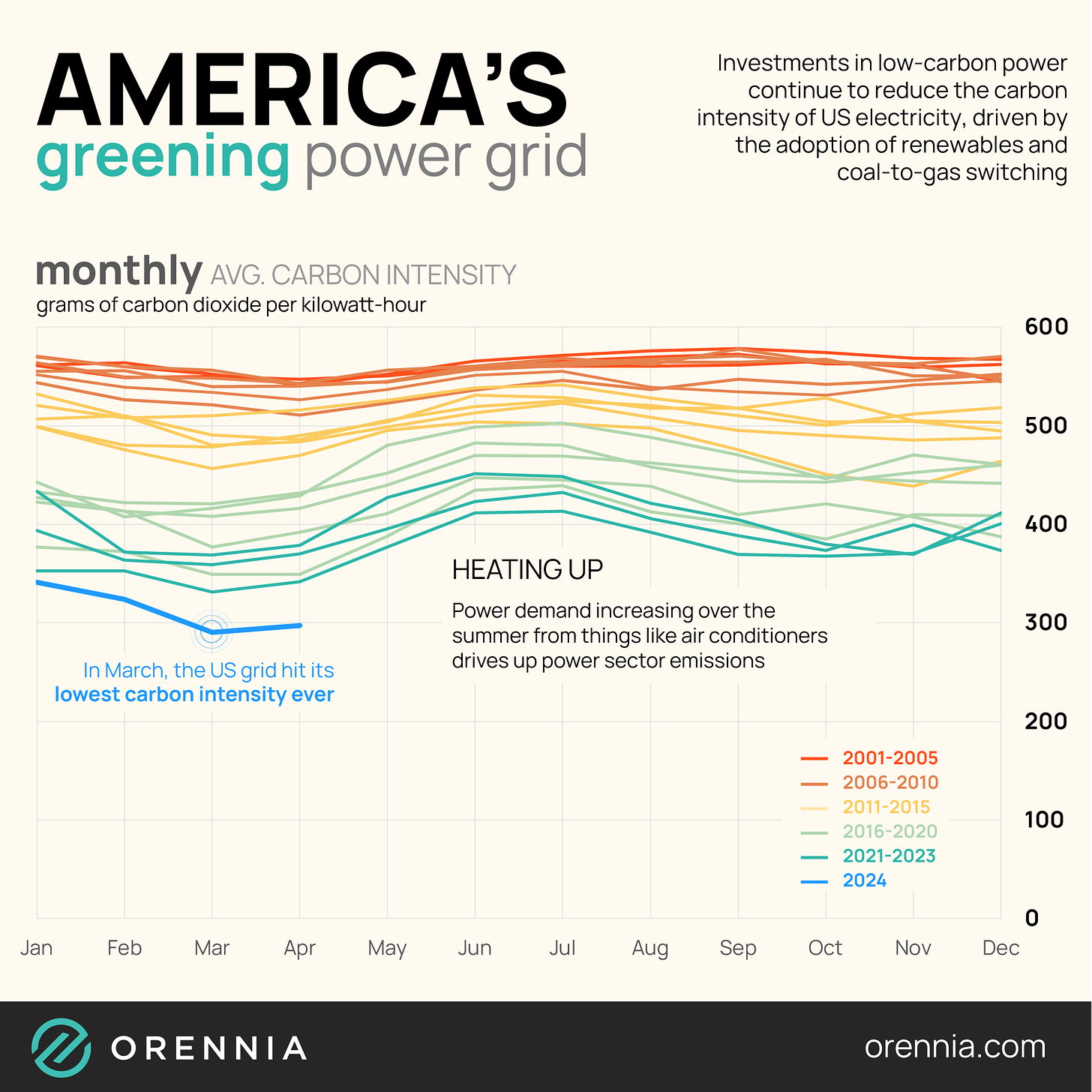Visualized: Cleaning Up the US Electricity Sector
The US grid keeps getting cleaner and cleaner
The reduction of carbon intensity in the US electrical grid during the 21st century has been a significant focus of environmental policy and technological development, driven by both technology and policy.
Shift to renewables: There has been a substantial increase in the use of renewable sources, including wind, solar and hydroelectric power. The reduced cost of solar and wind has made them more competitive with traditional fossil fuels.
Federal and state policies, including tax incentives and renewable portfolio standards, have encouraged the adoption of renewable energy.
Coal down, gas up: The number of coal-fired power plants have been reduced as a result of stricter environmental regulations and cheap natural gas. The decline in coal use has accounted for ~60% of emission reductions from the power sector since 2005. Natural gas has become the dominant source of electricity generation in the US due to its lower carbon emissions compared to coal and its abundance from the shale gas boom.
Technological Advancements
New technologies have also played an important role in adapting to a more complex power sector. The modernization of the electrical grid, including the development of smart grid technologies, has improved efficiency and reliability. The cause of congestion on the grid has been a factor in driving down the emissions intensity on the grid.
Advances in battery storage technology have improved the ability to store renewable energy for use when production is low. Large-scale energy storage solutions, like grid-scale batteries, are becoming more common.
Policy’s Role
Government policies have significantly driven the adoption of renewables, reducing the power sector's carbon emissions. Cap-and-trade programs like the Regional Greenhouse Gas Initiative (RGGI) have also set limits on carbon emissions, providing economic incentives for cleaner energy technologies.
Looking Ahead
The US has set ambitious clean energy targets, including having a 100% clean electricity grid by 2035. There is a long way to go, but the low cost of solar and wide adoption of residential and commercial energy storage helps in making that push.
Written by Aaron Foyer, Vice President of Research and Analytics at Orennia
✉️ As always, feel free to reach out to me at aaron.foyer@orennia.com





